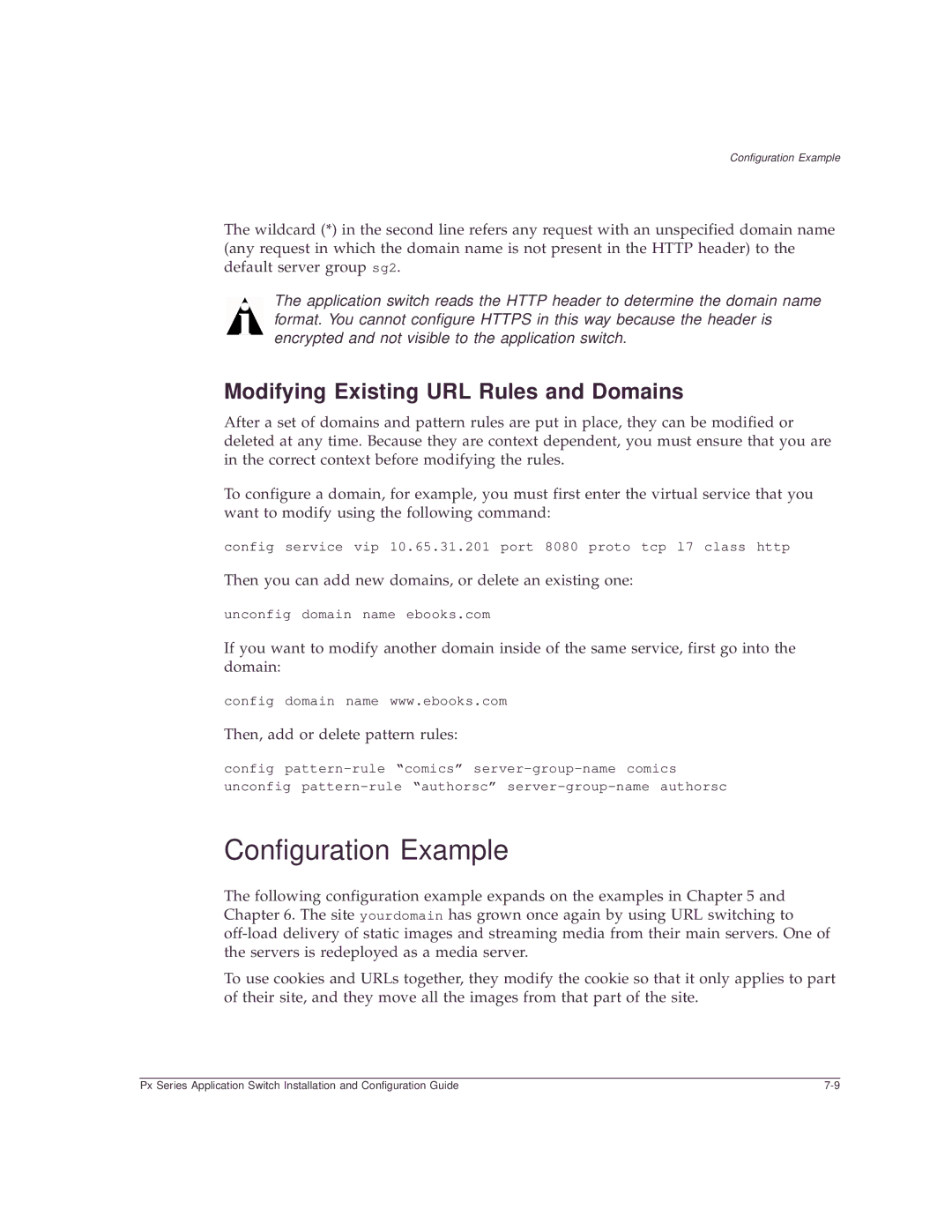
Configuration Example
The wildcard (*) in the second line refers any request with an unspecified domain name (any request in which the domain name is not present in the HTTP header) to the default server group sg2.
The application switch reads the HTTP header to determine the domain name format. You cannot configure HTTPS in this way because the header is encrypted and not visible to the application switch.
Modifying Existing URL Rules and Domains
After a set of domains and pattern rules are put in place, they can be modified or deleted at any time. Because they are context dependent, you must ensure that you are in the correct context before modifying the rules.
To configure a domain, for example, you must first enter the virtual service that you want to modify using the following command:
config service vip 10.65.31.201 port 8080 proto tcp l7 class http
Then you can add new domains, or delete an existing one:
unconfig domain name ebooks.com
If you want to modify another domain inside of the same service, first go into the domain:
config domain name www.ebooks.com
Then, add or delete pattern rules:
config
unconfig
Configuration Example
The following configuration example expands on the examples in Chapter 5 and Chapter 6. The site yourdomain has grown once again by using URL switching to
To use cookies and URLs together, they modify the cookie so that it only applies to part of their site, and they move all the images from that part of the site.
Px Series Application Switch Installation and Configuration Guide |
